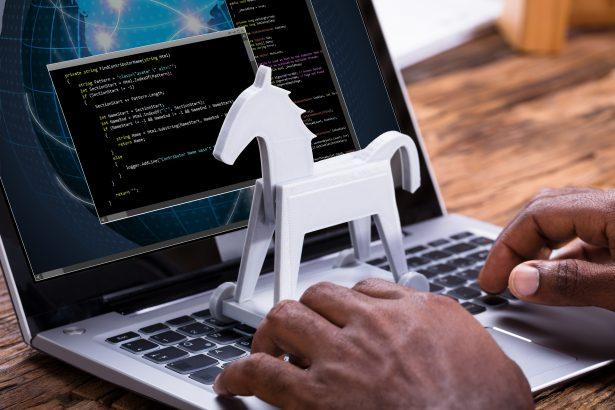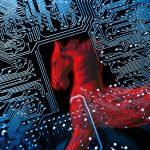The file libeay32.dll may appear to be a legitimate system or application component, but in reality, it is often used as a disguise for Trojan Horse malware. This dangerous file can severely compromise your computer’s security, stability, and performance. Found commonly in pirated software or bundled freeware, this fake setup component operates silently in the background, stealing sensitive data and even turning your device into a tool for further cyberattacks.
What Is libeay32.dll?
In legitimate software, libeay32.dll is a dynamic-link library associated with OpenSSL used for secure communication. However, cybercriminals often exploit this file name to mask malicious behavior. A compromised or spoofed version of libeay32.dll can function as part of a Trojan Horse attack, where it performs unauthorized actions without the user’s knowledge.
Once executed, this file can collect personal information, install backdoors, perform ransomware operations, and more. It may even hijack system resources for cryptomining or to carry out Distributed Denial-of-Service (DDoS) attacks.
Summary Table of the libeay32.dll Threat
| Attribute | Details |
|---|---|
| Threat Type | Trojan Horse / Malware |
| Detection Names | Trojan.GenericKD, Trojan:Win32/Agent, Backdoor.Win32.Agent, Artemis!libeay32.dll |
| Associated Emails | Not applicable |
| Symptoms | Slow performance, system freezes, high CPU usage, suspicious processes |
| Potential Damage | Data theft, ransomware encryption, remote access, spreading across networks |
| Distribution Methods | Bundled downloads, fake updates, phishing emails, exploit kits |
| Danger Level | High |
Capabilities of libeay32.dll
Once active on the system, this malicious DLL can:
- Harvest Credentials: Steal passwords, browser-stored logins, cryptocurrency wallets, and more.
- Ransomware Activity: In ransomware scenarios, it may encrypt user data and demand payment to restore it.
- Remote Access: Open a backdoor for attackers, allowing full control over your machine.
- Keylogging: Capture everything typed on the keyboard.
- Resource Exploitation: Use CPU and GPU for illicit cryptocurrency mining, causing overheating and lag.
- Lateral Movement: Attempt to propagate through local networks and connected devices.
How libeay32.dll Gets Installed
Cybercriminals use stealthy and manipulative tactics to infiltrate user systems with fake versions of this DLL. These may include:
- Cracked Software: Illegally downloaded programs often come bundled with malicious payloads like libeay32.dll.
- Fake Setup Files: Disguised installers trick users into thinking they are legitimate.
- Spam Emails: Malicious attachments or links in emails lead to infection.
- Exploit Kits: Compromise outdated software to silently inject malware.
- Drive-by Downloads: Visiting compromised or malicious websites may result in an automatic download of this threat.
Manual Removal of Trojan Malware
Important: Manual removal is not recommended for beginners. It involves interacting with system files and the Windows Registry, which, if done incorrectly, can lead to system issues.
Step 1: Restart in Safe Mode with Networking
Booting into Safe Mode disables unnecessary startup programs, including most malware.
- Press Windows + R, type
msconfig, and hit Enter. - In the System Configuration window, go to the Boot tab.
- Check Safe boot, then select Network.
- Click Apply and restart your computer.
Step 2: Terminate Malicious Processes
- Open Task Manager using Ctrl + Shift + Esc.
- Navigate to the Processes or Details tab.
- Identify any unusual or unrecognized processes. Be cautious—do not stop critical Windows processes.
- Right-click a suspicious process, choose Open File Location, then End Task.
- Delete the associated file from the opened folder.
Step 3: Delete Trojan Files
- Press Windows + R, type
%appdata%, and press Enter. - Check for any unknown folders created recently.
- Repeat the same for these directories:
%localappdata%C:\Program FilesC:\Program Files (x86)C:\Windows\Temp
- Delete any folders or executables related to the Trojan.
Step 4: Clean Up the Windows Registry
- Press Windows + R, type
regedit, and press Enter. - Go to these registry paths:
HKEY_LOCAL_MACHINE\SOFTWARE\Microsoft\Windows\CurrentVersion\RunHKEY_CURRENT_USER\SOFTWARE\Microsoft\Windows\CurrentVersion\Run
- Look for registry entries with unusual names or links to suspicious files.
- Right-click and delete the unwanted entries.
Tip: Back up your registry before making changes by clicking File > Export in the Registry Editor.
Step 5: Reset Your Web Browsers
Malicious Trojans often tamper with browser settings to redirect users to unwanted sites.
Chrome
- Settings > Reset and clean up > Restore settings to their original defaults.
Firefox
- Help > More Troubleshooting Information > Refresh Firefox.
Edge
- Settings > Reset settings > Restore settings to their default values.
Step 6: Perform a Full System Scan with Windows Defender
- Open Windows Security from the Start menu.
- Click Virus & threat protection > Scan options.
- Choose Full Scan and click Scan now.
Step 7: Update Windows
- Go to Settings > Windows Update.
- Click Check for updates and install all available patches.
Method 2: Automatically Remove Trojans Using SpyHunter
Manual removal can be effective, but it’s time-consuming and may leave hidden components behind. SpyHunter is a trusted malware removal tool that automatically detects and eliminates Trojans and other threats.
Step 1: Download SpyHunter
Use the official download link: Download SpyHunter
Follow these instructions for installation: SpyHunter Download Instructions
Step 2: Install the Program
- Locate the downloaded file, usually SpyHunter-Installer.exe.
- Double-click it and follow the on-screen steps to complete the installation.
- Launch SpyHunter when finished.
Step 3: Scan Your PC
- Click the Start Scan Now button on the SpyHunter dashboard.
- Allow the scan to complete (it may take several minutes).
- Review the detected items.
Step 4: Remove Threats
- Click Fix Threats.
- SpyHunter will quarantine and remove the detected Trojan files automatically.
Step 5: Restart Your PC
Once the cleanup is finished, restart your system to finalize the changes.
Trojan Prevention Tips
- Avoid downloading software from unofficial sources.
- Be wary of email attachments, even from known contacts.
- Keep Windows and applications updated with the latest patches.
- Use a reputable security program like SpyHunter for active malware protection.
Conclusion
The libeay32.dll threat highlights how deceptive and damaging Trojan Horse malware can be when it hides under the guise of legitimate software. Although it might not raise immediate suspicion, its long-term consequences range from performance degradation to complete loss of sensitive data. Understanding how it operates and how it gets into your system is essential for identifying the threat early and seeking the proper tools for removal. Users should always be cautious about the software they install and avoid suspicious downloads or email attachments.




